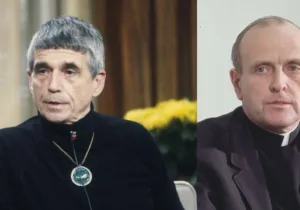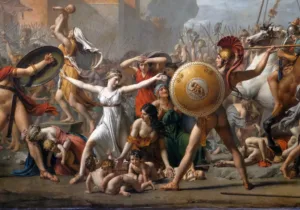This holiday season has witnessed a tense standoff between the United States and Israel at the United Nations. Here are the most important facts you need to know:
- At the center of this standoff is UN Resolution 2334, which demands, among other things, “that Israel immediately and completely cease all settlement activities in the occupied Palestinian territory,” including in East Jerusalem and the Old City. The UN resolution was introduced on the eve of Hanukkah in the Security Council, the most powerful organ of the UN and the only one able to make binding decisions under international law. The United States usually vetoes these kinds of resolutions against Israel. What made this case noteworthy was that the US abstained from the vote, allowing it to pass 14-0. The result was a resounding global condemnation of Israel’s behavior as contrary to peace.
- Israel’s Prime Minister Benjamin Netanyahu, along with most Israelis, sees the US’s abstention as an imbalanced act of hypocrisy and betrayal. The Obama administration, for its part, defended its behavior in a 70-minute speech delivered by John Kerry on Wednesday, arguing that it represents America’s longstanding commitment to getting the two sides to reach a peace deal. The Palestinian Authority is happy. The Palestinian terrorist organizations Hamas and Islamic Jihad are also happy, and have called for an escalation of violence against the Jewish state.
- At the center of this dispute are the Jewish settlements, those controversial Jewish towns that have been built in the West Bank (known to Jews as “Judea and Samaria”) that Israel acquired after it defeated Jordan in the 1967 Six Day War. The conflict between Jews and Arabs long antedates the beginning of the settlement enterprise in in the 1970s, but many Palestinians and pro-Palestinian advocates claim that a Jewish presence inside the West Bank is one of the primary obstacles to peace. Many Jews argue that the settlements are not an obstacle to peace, and only one of many outstanding issues that will be settled in a final peace agreement. They point to the fact that the Palestine Liberation Organization (PLO) was founded to liberate Palestine in 1964, several years before Israel controlled the West Bank and before the first settlement was ever established.
- The UN resolution, like most Western diplomatic efforts, is based on an ironclad faith in the necessity of a two-state solution: the plan to divide the land and create two states, a Jewish state of Israel and an Arab state of Palestine, that will live side by side in peace. Virtually all world governments, including the US, Israel, and the Palestinian Authority, are officially committed to the two-state solution. On the ground, however, Jews and Arabs are increasingly doubtful that the two-state solution is desirable. A recent poll of Palestinians in the West Bank and Gaza reveals that a full 65% believe the two-state paradigm is no longer viable, 76% believe that the Palestinian Authority (the basis for a future State of Palestine) is corrupt, and 49% believe it is a burden on the Palestinian people.
- One of the most troubling aspects about the two-state solution for human rights advocates is that the demand for uprooting Jewish homes from the West Bank means that the future State of Palestine will be completely Jew-free. This is directly opposite to the situation inside Israel, where Arabs make up over 20% of the citizenry and enjoy equal rights with Jews. Demanding that Arabs live equally in a Jewish state while forbidding Jews to live in an Arab state seems contradictory and unjust. It seems to dovetail with a larger refusal by the Palestinian people to accept Jewish sovereignty anywhere in the Holy Land.
- The notion of a two-state solution is relatively new. It has roots in UN Resolution 181, a partition plan that was proposed in 1947 before Israel ever became a state. The Jews accepted the partition plan; the Arabs rejected it. Their rejection continued until the early 1990s, and it was only upon the signing of the Oslo Accords in 1993 that the PLO finally acknowledged Israel’s existence and ceased terrorist operations in exchange for the chance to participate in the experiment of Palestinian self-government. On the American side, public support for a Palestinian state only began with President George W. Bush in 2002. His support led, in turn, to official recognition of the two-state solution by the United Nations in UNSC 1397. All told, the two-state solution is only about 14 years old; the conflict, of course, has been going on for almost a century.
- The question of why the Obama administration waited until now, after eight years of friendly support at the UN, to voice such public condemnation of Israel can be answered partially by pointing to the long-simmering tension between President Obama and Prime Minister Netanyahu. The two leaders just don’t get along. Also important is the fact that President-Elect Donald Trump is on record as eager to push US policy in the opposite direction. Obama appears to be taking a tough stance in anticipation of what he believes will a “free pass” for Israel under Trump’s administration. Meanwhile, repeated surveys of the American people show far more support for Israel than the current UN standoff would suggest.
- For Israelis, all of this cannot be divorced from the wider regional context. In the words of Netanyahu: “[H]alf a million human beings are being slaughtered in Syria. Tens of thousands are being butchered in Sudan. The entire Middle East is going up in flames, and the Obama administration and the Security Council choose to gang up on the only democracy in the Middle East – the State of Israel.” For Israelis who feel surrounded by violent extremism at every turn, the idea that a few hundred thousand Jews living inside the West Bank is the primary obstacle to peace in the region seems almost laughable.
- For Palestinians, especially in the younger generation, all of these debates are esoteric until they start to improve lives on the ground. While many activists rail against settlements, a growing number choose to focus on equal rights for both Jews and Arabs in the land, wherever they may live. Palestinian Christian advocate Jonathan Kuttab, a long-time critic of Israel and advocate for a Palestinian state, made a historic appearance at a New York synagogue last month calling for a binational state that encompasses all of the historic land of Israel. While the idea has many drawbacks for Jews and Arabs and is hotly-contested by people on both sides, the idea resonates far more with sentiments and realities on both sides of the street. What this growing divide between diplomats and people on the ground means for the future of the two-state solution still remains to be seen. At the very least, a more creative approach toward peacemaking that is in sync with local sentiment appears urgently needed.
—
Robert Nicholson is executive director of the Philos Project and co-publisher of Providence. This article first appeared on the Philos Project website at: https://philosproject.org/nine-things-need-know-u-s-israel-fallout-united-nations/






